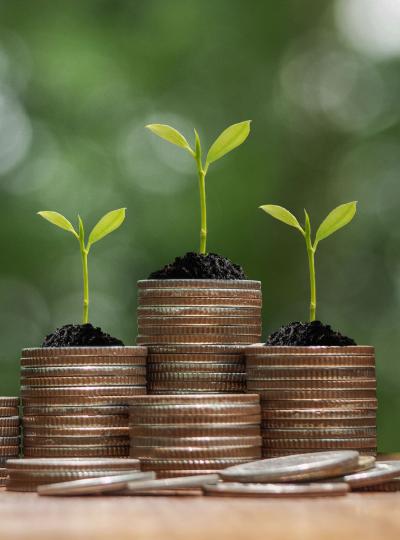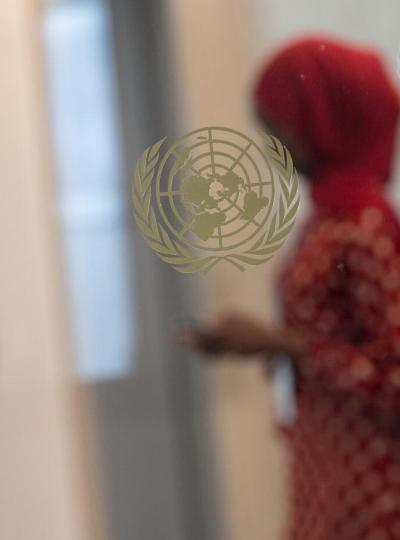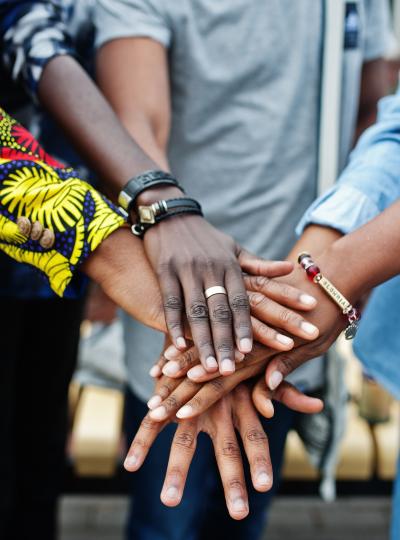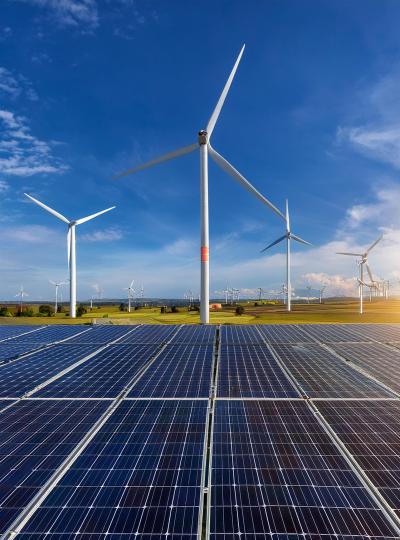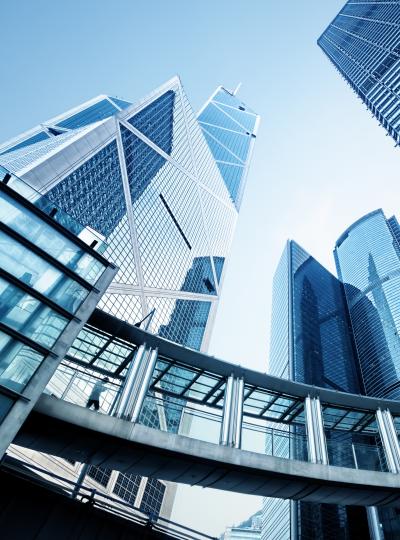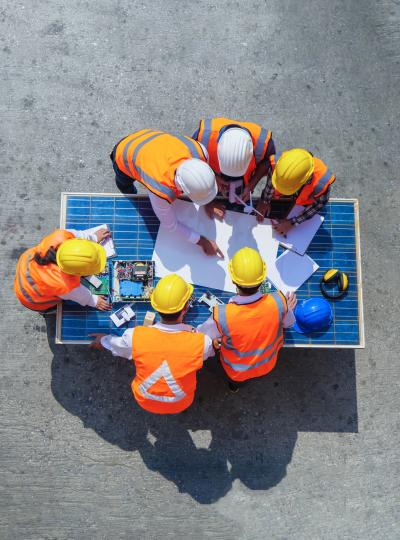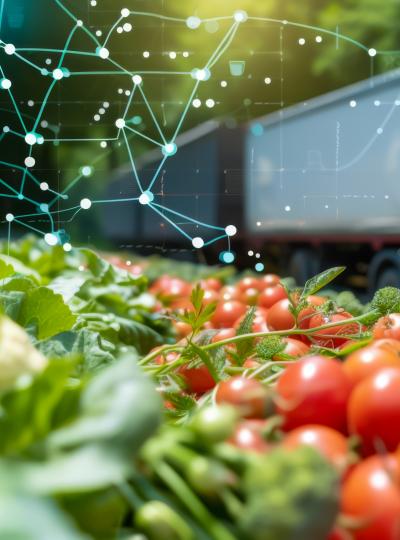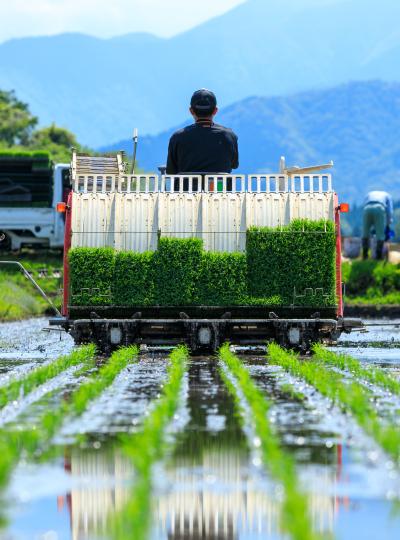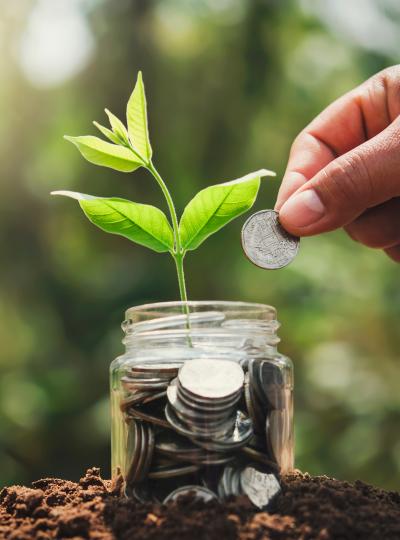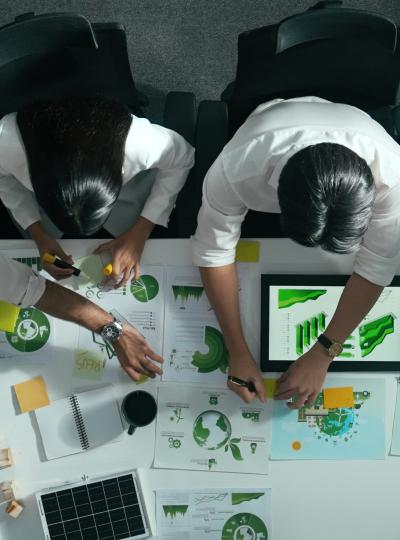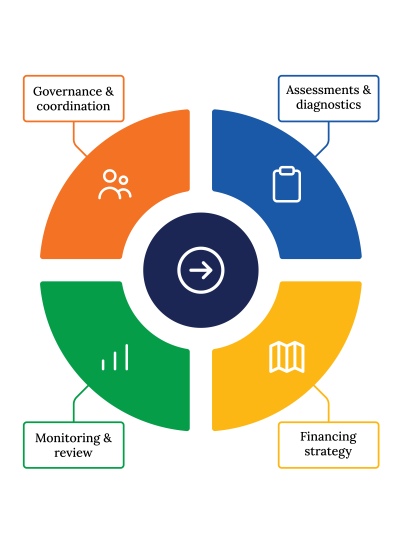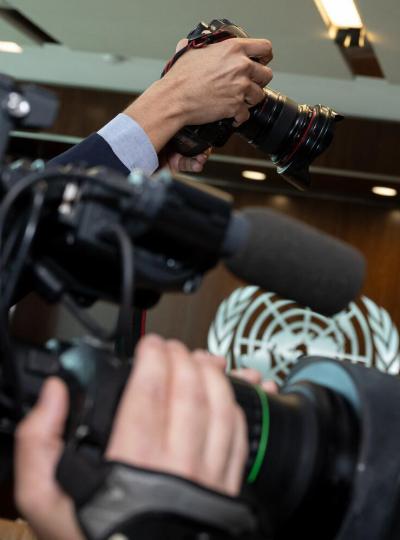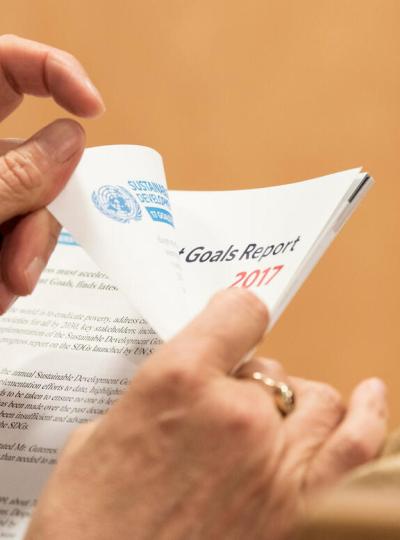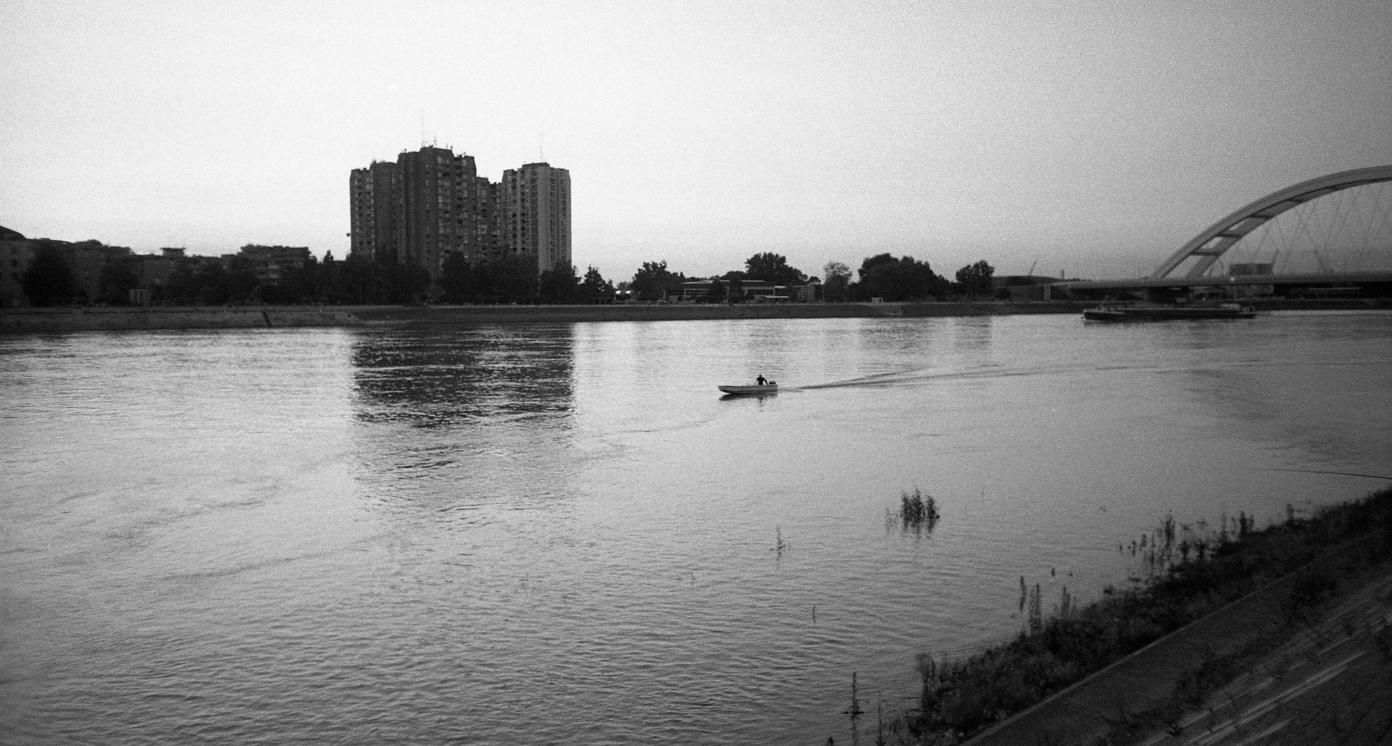Port Infrastructure
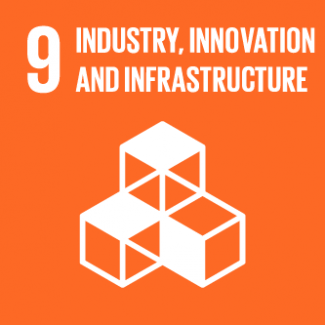
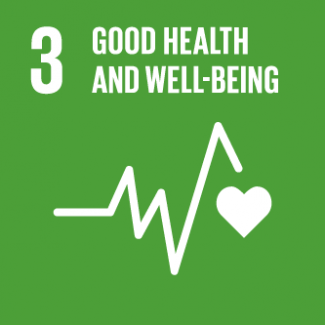
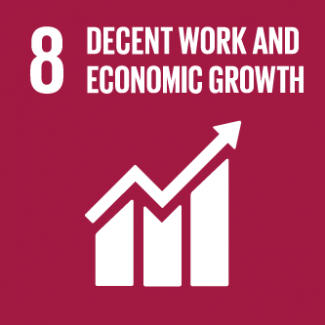
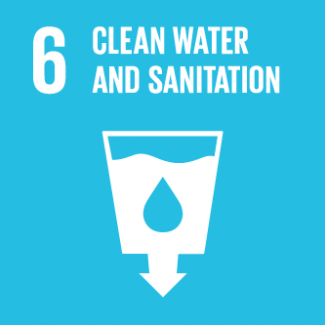
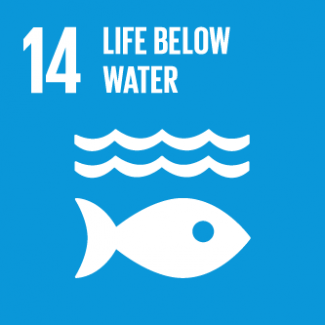
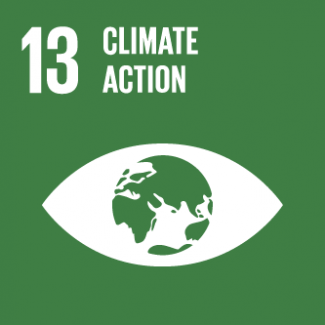
Business Model Description
Finance, design, construct, and operate river port infrastructure through a Public-Private Partnership (PPP), targeting both goods and people. The government owns the port land and assets but grants a concession to a private sector entity to finance, construct, and operate the port facility for a specified period of time. The private sector entity finances the project, including construction costs, and operate the port facility for the concession period. In return, the private sector entity receives a share of the revenue generated by the port, such as through port fees or lease payments.
Expected Impact
Improve transportation of goods and people with lower environmental impact, reduce logistical inefficiencies, and boost economic productivity.
How is this information gathered?
Investment opportunities with potential to contribute to sustainable development are based on country-level SDG Investor Maps.
Disclaimer
UNDP, the Private Finance for the SDGs, and their affiliates (collectively “UNDP”) do not seek or solicit investment for programmes, projects, or opportunities described on this site (collectively “Programmes”) or any other Programmes, and nothing on this page should constitute a solicitation for investment. The actors listed on this site are not partners of UNDP, and their inclusion should not be construed as an endorsement or recommendation by UNDP for any relationship or investment.
The descriptions on this page are provided for informational purposes only. Only companies and enterprises that appear under the case study tab have been validated and vetted through UNDP programmes such as the Growth Stage Impact Ventures (GSIV), Business Call to Action (BCtA), or through other UN agencies. Even then, under no circumstances should their appearance on this website be construed as an endorsement for any relationship or investment. UNDP assumes no liability for investment losses directly or indirectly resulting from recommendations made, implied, or inferred by its research. Likewise, UNDP assumes no claim to investment gains directly or indirectly resulting from trading profits, investment management, or advisory fees obtained by following investment recommendations made, implied, or inferred by its research.
Investment involves risk, and all investments should be made with the supervision of a professional investment manager or advisor. The materials on the website are not an offer to sell or a solicitation of an offer to buy any investment, security, or commodity, nor shall any security be offered or sold to any person, in any jurisdiction in which such offer would be unlawful under the securities laws of such jurisdiction.
Country & Regions
- Serbia: Vojvodina Autonomous Province
- Serbia: Belgrade Region
- Serbia: Southern and Eastern Serbia
Sector Classification
Infrastructure
Development need
Progress towards target SDG 9.1 indicates contradictory trends. Progress is made in road and air transport, and movement away from the target in rail, pipeline, and inland waterway transport. Concerning target SDG 11.6, a decrease in the municipal waste recycling rate is registered (2). The poor state of water infrastructure is identified (3).
Policy priority
The aim of the high-level policy Spatial Plan of Serbia (2021-2031) is better accessibility of traffic, infrastructural, social and communal services, and integrated infrastructure; higher quality of life; economic development and functioning of all/critical activities based on sustainability, circular development and mitigating the impact of climate challenges (4).
Gender inequalities and marginalization issues
About 70% of Roma men and women in the Republic of Serbia live in spatially and socially segregated settlements, in deplorable and inadequate living conditions, and without access to basic infrastructure. The majority of homeless people are women over 65 years old, and about 31% are Roma men and women. Young LGBT* people who mostly live in families that do not approve of their sexual orientation also encounter difficulties, and young people increasingly end up homeless after "outing" (5).
Investment opportunities introduction
Policies of Serbia are focused on the implementation of traffic networks, reconstruction and development of infrastructure; increase in electricity generation and lift energy efficiency (4). 4 billion EUR are planned to be invested in reconstructing the railway infrastructure (7). Renovation of rural infrastructure for 70 million EUR is planned (8).
Key bottlenecks introduction
The age and inefficiency of the transmission and distribution power grid and facilities and the quality of trade and transport-related infrastructure show a decreasing trend (3, 6). Only few local governments have waste collection centers ("recycling yards") (1).
Infrastructure
Development need
Serbia needs significant upgrades in transportation, water and wastewater infrastructure, and energy to modernize its outdated and neglected infrastructure due to a lack of investment and the aftermath of conflicts. The country has invested in renewable energy sources, but much work remains to modernize the energy infrastructure (17).
Policy priority
Low fuel emissions, energy efficiency, better multimodal transport, new technologies, the concept of a single European traffic area, and integrating all modes of transportation to achieve a more efficient, sustainable, competitive, and accessible transport system are the among Serbia's infrastructure priorities (3).
Gender inequalities and marginalization issues
Poor infrastructure in rural areas results in social exclusion of rural women. Аbout 5,000 Roma families, about 25,000 people, do not have drinking water, nor can they carry out basic hygiene measures (6).
Investment opportunities introduction
Important geographical position and considerable available resources on inland waterways; rationalization of transport and use of advantages of all modes of transport are among the top investment opportunities within the infrastructure subsector (4).
Key bottlenecks introduction
Illegally built residential buildings make up 47.24% of the total number of residential buildings (3). Furthermore, there is a dominance of underdeveloped areas with over 120 Local Governments of below-average development, especially in demographically depleted areas (4).
Engineering and Construction Services
Pipeline Opportunity
Port Infrastructure
Finance, design, construct, and operate river port infrastructure through a Public-Private Partnership (PPP), targeting both goods and people. The government owns the port land and assets but grants a concession to a private sector entity to finance, construct, and operate the port facility for a specified period of time. The private sector entity finances the project, including construction costs, and operate the port facility for the concession period. In return, the private sector entity receives a share of the revenue generated by the port, such as through port fees or lease payments.
Business Case
Market Size and Environment
USD 100 million - USD 1 billion
The Serbian government plans to invest USD 550 million in environmental remediation and ordnance-removal projects in the Danube River basin. They will also construct a new port in Belgrade by the end of 2023 and upgrade the Smederevo Port terminal with an investment of USD 106 million, with more than half going toward port infrastructure (34).
Serbia's Port Management Agency handled 15.95 million tons of transhipped cargo on rivers in 2021, down 3.2% from 2020. The aim is to transport 20 million tons by 2025. In 2021, business income was USD 62 million, revenue of USD 54 million from river traffic, USD 53 million from cargo traffic, and USD 30.7 million from foreign exchange (41, 42, 43).
Indicative Return
< 5%
Due to the higher initial investments, the return period from the investment in port infrastructure is more than 25 years, which makes up the return of investment below 5% (18).
Investment Timeframe
Long Term (10+ years)
With an ROI below 5%, the expected payback period is over 10 years, more precisely over 25 years based on stakeholder consultations (18).
Ticket Size
> USD 10 million
Market Risks & Scale Obstacles
Market - Volatile
Capital - CapEx Intensive
Impact Case
Sustainable Development Need
Serbia ranks 113th out of 137 countries in terms of the quality of its port infrastructure (28). In other countries, freight transportation by water traffic accounts for 15% of the total traffic. In Serbia, it is only 7% to 10% (33).
Ports in Serbia are characterized by a relatively poor state of port infrastructure, while the port superstructure is outdated, which is why transshipment operations are of low quality. In the ports and docks of Serbia, the turnover of intermodal units is negligible (9).
Waterway downstream from Prahovo port narrows to 180 meters, with ships narrowing it to 100 meters. It is unexplored and marked white on maps. It is necessary to strive to establish waterways with the simultaneous development of the river fleet and reconstruction (32, 31).
Gender & Marginalisation
Water transport in Serbia is mainly limited to the transport of gravel, sand, and grain by barges. The low quality of water traffic makes the population use other ways of transportation that are more expensive. Due to that, there is limited connectivity between urban and rural areas (33).
Expected Development Outcome
Upgraded port infrastructure preserves roads and the environment, and enhances the transportation of especially good with anticipated savings (33).
The development of port infrastructure leads to the further development of waterways and the river fleet, together with infrastructure reconstruction and construction (31).
Port infrastructure significantly improves transportation and connectivity, both within a country and internationally. Ports allow for faster and more efficient movement of goods and people (19).
Gender & Marginalisation
Developing port infrastructure creates new job opportunities for marginalized groups such as low-skilled workers. This can lead to improved economic conditions and social mobility (18).
Port infrastructure is more accessible to the low-income population due to higher profitability of river transport compared to other models of transport (33).
As a majority of the workforce in the tourism, services, and creative industries, women can benefit from increased port infrastructure and waterway transport in terms of the potential for local communities to increase income and benefit from tourism in general.
Primary SDGs addressed

9.1.2 Passenger and freight volumes, by mode of transport
1,883 tonne-kilometres of freight volume (inland waterway transport) (2021) (35).
N/A

3.6.1 Death rate due to road traffic injuries
7.5 deaths per 100,000 population (2019) (36).
N/A

8.1.1 Annual growth rate of real GDP per capita
8.6% (2021) (44).
N/A
Secondary SDGs addressed



Directly impacted stakeholders
People
Gender inequality and/or marginalization
Planet
Corporates
Public sector
Indirectly impacted stakeholders
People
Corporates
Public sector
Outcome Risks
Ports infrastructure may significantly impact marine ecosystems, mainly by discharging pollutants and disturbing habitats (22).
Port infrastructure may lead to navigation dependence on hydrometeorological conditions (challenging in the period of low water levels) and the appearance of "bottlenecks" in the transport of goods (22).
Impact Risks
Serbia's ports are vulnerable to shifts in demand, changing trade patterns, and economic downturns. The competition from other ports in the region can limit the impact of port infrastructure (18).
Impact Classification
What
Investment in the port infrastructure can boost the economy, create jobs, improve transportation, and reduce fuel consumption.
Who
Public authorities, private sector companies, local communities, and residents involved in planning and managing benefits from the improvement of port infrastructure.
Risk
Port infrastructure may get affected by changes in demand, changing trade patterns, and economic downturns, as much as competition from other ports.
Impact Thesis
Improve transportation of goods and people with lower environmental impact, reduce logistical inefficiencies, and boost economic productivity.
Enabling Environment
Policy Environment
Strategy for the Development of Railway, Road, Water, Air, and Intermodal Transport in the Republic of Serbia, 2007 sets out the government's vision for developing of the country's transport infrastructure, including ports (21).
Strategy for Developing Water Transport in the Republic of Serbia, 2014 aims to plan, regulate, and manage water transport development and infrastructure of ports (22).
Tourism Development Strategy of the Republic of Serbia, 2016 aims to promote the country as a tourist destination, one of which focuses on improving port infrastructure (23).
The National Strategy for Environmental Protection in Serbia, 2010 sets out the government's goals and plans for protecting the country's natural environment, including regulations on the environmental impact of infrastructure development (24).
The Spatial Development Program of the Republic of Serbia, 2021 aims to promote balanced development across the country, including in the regions where ports are located and reconstruction of ports (4).
Financial Environment
Financial incentives: The maximum amount of funds allowed by regulation for investments >USD 52 million cannot exceed 25% of the justified costs. For investments >USD 105 million, the limit is 17% of the expenses justified (14).
Fiscal incentives: The Ministry offers financing of the project depending on the level of development of the Local Self-Government Unit: up to 100% of the value of the project without value added tax for the IV and III level of development; Up to 60% for II and I stage of development (13).
Other incentives: Foreign investors in Serbia receive the same treatment as locals and free profit/capital transfer. Bilateral Investment Treaties provide further protection (20). Serbia is a member of CEFTA, providing market access and regulatory harmonization opportunities (30).
Regulatory Environment
The Spatial Development Program of the Republic of Serbia, 2021 aims to promote balanced development across the country, including in the regions where ports are located and reconstruction of ports (4).
The Law on Environmental Protection, no. 76 and 95, 2018 sets out the requirements for environmental impact assessments and the mitigation of adverse environmental impacts for infrastructure development (26).
The Law on Public Procurement, no. 91, 2019: regulates the process for awarding contracts for public works projects, including port infrastructure development (27).
The Law on navigation and Ports on inland waters, no.18, 2015 regulates the conditions and methods for safe navigation on internal waters of the Republic of Serbia, waterways and navigation, vessels and their ability to navigate, crew, search and rescue, ports and docks (29).
The Law on navigation and Ports on inland waters, no.18, 2015 regulates the conditions and methods for safe navigation on internal waters of the Republic of Serbia, waterways and navigation, vessels and their ability to navigate, crew, search and rescue, ports and docks (29).
The Law on Water, no.95/2018, regulates the legal status of water, integral water management, management of water facilities and land, sources, and methods of financing water activity, supervision over the implementation of this law, and other issues vital for water management (15).
The Law on Fees for the Use of Public Goods 49/2019 regulates fees for the use of public goods, namely: payer, base, amount, method of determination and payment, allocation of income from the fee, as well as other issues of importance for determining and paying fees for the use of public goods (16).
Marketplace Participants
Private Sector
Enterprises such as Agent Plus Doo, Dragon Maritime See D.O.O, Sea Danube Trans Doo, Rubikon Shipping Company Doo, Hibrid Doo, Euro Gas D.O.O, Jrb Ad, Rhenus Partnership Serbia Doo, Dunavski Transport Doo.
Government
Ministry of Construction, Transport, and Infrastructure, Ministry of Public Investments, Ministry of Environmental Protection, Port Governance Agency, Agency for Environmental Protection.
Multilaterals
International Trade Administration, International Finance Corporation (IFC), United Nations Economic Commission for Europe (UNECE), European Federation of Inland Ports (EFIP).
Non-Profit
International Association of Ports and Harbors (IAPH), International Harbour Masters' Association (IHMA), European Sea Ports Organisation (ESPO), International Maritime Organization (IMO).
Public-Private Partnership
The Ports Agency supports PPP for port management and public procurement for marina construction. They announce an annual tender for port activities and plan to introduce concessions for construction and management projects worth over USD 5.2 million (45, 10, 11).
Target Locations
Serbia: Vojvodina Autonomous Province
Serbia: Belgrade Region
Serbia: Southern and Eastern Serbia
References
- (1) Ministry of Environmental Protection, Waste management program in the Republic of Serbia for the period 2022-2031, 2022. https://ekologija.gov.rs/sites/default/files/2022-02/program_upravljanja_otpadom_u_rs_za_period_2022-2031._god_0_2.pdf
- (2) Statistical office of the Republic of Serbia, Progress Report on the Implementation of Sustainable Development Goals by 2030 in the Republic of Serbia, 2022. https://www.stat.gov.rs/media/353537/progress-report-on-the-implementation-of-sustainable-development-goals-by-2030-in-the-republic-of-serbia.pdf
- (3) Ministry of Construction, Transport and Infrastructure, Strategy for Sustainable Urban Development of the Republic of Serbia until 2030, 2019. https://www.pravno-informacioni-sistem.rs/SlGlasnikPortal/eli/rep/sgrs/vlada/strategija/2019/47/1/reg
- (4) Ministry of Construction, Transport and Infrastructure, Draft of the Spatial Plan of the Republic of Serbia from 2021 to 2035, 2021. https://www.mgsi.gov.rs/sites/default/files/PPRS%20Nacrt.pdf
- (5) Ministry of Labour, Employment, Veteran and Social Affairs, Strategy of Prevention and Protection Against Discrimination for the period from 2022 to 2030, 2022. https://www.pravno-informacioni-sistem.rs/SlGlasnikPortal/eli/rep/sgrs/vlada/strategija/2022/12/2
- (6) Sustainable Development Report 2022, Sustainable development report 2022-Serbia, 2023. https://dashboards.sdgindex.org/profiles
- (7) B92.net, Serbia invests 4 billion euros: The complete reconstruction of the railway is planned, 2019. https://www.b92.net/biz/vesti/srbija/ulaze-se-cetiri-milijarde-evra-u-planu-celokupna-obnova-zeleznice-1563466
- (8) Cordmagazine.com, Renovation of rural infrastructure for 70 million euros, 2022. https://cordmagazine.com/sr/srbija/obnova-seoske-infrastrukture-za-70-miliona-evra/
- (9) Port Governance Agency, Medium-term concession granting plan 2016-2019 and Annual concession granting plan for 2016, n.d.
- (10) Ekapija.com, Hesteel makes first profit in Smederevo in December 2016 – production of 2 million tons of steel and earnings of EUR 20 million planned in 2017, 2016. https://www.ekapija.com/en/news/1623452/hesteel-makes-first-profit-in-smederevo-in-december-2016-production-of-2
- (11) Port Governance Agency, Initialing of the agreement port activities on the performance of Port Activities with Hesteel Serbia Iron & Steel Ltd. Belgrade, n.d. https://www.aul.gov.rs/en/initialing-of-the-agreement-port-activities-on-the-performance-of-port-activities-with-hesteel-serbia-iron-steel-ltd-beograd
- (12) The Ministry of Economy of the Republic of Serbia, Stevanovic signed a contract on privatization of the Port of Novi Sad, 2019. https://www.privreda.gov.rs/aktuelno/vesti-i-saopstenja/stevanovic-potpisao-ugovor-o-privatizaciji-luke-novi-sad
- (13) Privreda.gov.rs, 2022. https://privreda.gov.rs/sites/default/files/documents/2023-02/Pravilnik%20o%20unutra%C5%A1njem%20ure%C4%91enju%20i%20sistematizaciji%20radnih%20mesta%20od%201.%20dec.%202022.g..pdf
- (14) RAS, Regulation on determining the criteria for the allocation of incentives for attracting direct investments, 2019. https://ras.gov.rs/uploads/2019/01/uredba-o-odredjivanju-kriterijuma-za-dodelu-podsticaja-radi-privlacenja-direktnih-ulaganja-u-oblasti-proizvodnje-prehrambenih-proizvoda-1.pdf
- (15) The Law on Water, 95/2018. https://www.aul.gov.rs/folder/zakon-o-vodama.pdf
- (16) The Law on Fees for the Use of Public Goods, 49/2019. https://www.aul.gov.rs/folder/zakon-o-naknadama-za-koriscenje-javnih-dobara.pdf
- (17) Keynote Address of Prime Minister Brnabic, 2020. https://media.srbija.gov.rs/medsrp/dokumenti/brnabic_ekspoze281020_cyr.pdf
- (18) Peterhof Consulting stakeholder consultations at Peterhof office on 9th of February, 2023.
- (19) Port Governance Agency, Ports and marinas, 2023. https://www.aul.gov.rs/folder/LM07B.pdf
- (20) IIA navigator, Serbia | International Investment Agreements Navigator | UNCTAD Investment Policy Hub, n.d. https://investmentpolicy.unctad.org/international-investment-agreements/countries/187/serbia?type=bits
- (21) "Official Gazette of RS", Strategy for the development of railway, road, water, air and intermodal transport in the Republic of Serbia from 2008 to 2015, 2007. https://www.putevi-srbije.rs/images/pdf/strategija/Strategijatransport_cir.pdf
- (22) "Official Gazette of the Republic of Serbia" Strategy development of water transport of the Republic of Serbia from 2015 to 2025, 2014. https://www.mgsi.gov.rs/sites/default/files/STRATEGIJA%20razvoja%20vodnog%20saobracaja%20Republike%20Srbije%20od%20201.pdf
- (23) "Official Gazette of the Republic of Serbia", Tourism Development Strategy of the Republic of Serbia for the period from 2016 to 2025, 98/2016-6. https://www.pravno-informacioni-sistem.rs/SlGlasnikPortal/eli/rep/sgrs/vlada/strategija/2016/98/1
- (24) Ministry of Environmental Protection of the Republic of Serbia, National program for environmental protection, 2021. https://www.ekologija.gov.rs/sites/default/files/2021-01/nacionalni-program-zastite-zivotne-sredine-r.srbija.pdf
- (25) Planning and Construction Law. Law on Planning and Construction, 52/2021. https://www.paragraf.rs/propisi/zakon_o_planiranju_i_izgradnji.html
- (26) Environmental Protection Act, The Environmental Protection Act, 76 and 95/2018. https://www.paragraf.rs/propisi/zakon_o_zastiti_zivotne_sredine.html
- (27) Law on Public Procurement. Law on Public Procurement, 91/2019. https://www.paragraf.rs/propisi/zakon-o-javnim-nabavkama.html
- (28) K.S. World Economic Forum, Insight report the global competitiveness report 2017–2018, 2017. https://www3.weforum.org/docs/GCR2017-2018/05FullReport/TheGlobalCompetitivenessReport2017%E2%80%932018.pdf?bcsi_scan_8dde7f71b980cf49=0&bcsi_scan_filename=TheGlobalCompetitivenessReport2017%E2%80%932018.pdf
- (29) LAW ON NAVIGATION AND PORTS ON INLAND WATERS, 18/2015. http://www.uprava-brodova.gov.rs/sr_cir/pdf/zakoni/Preciscen_tekst_Zakona_o_plovidbi_i_lukama_na_unutrasnjim_vodama_2015.pdf
- (30) Development agency of Serbia, Ras, n.d. https://ras.gov.rs/en/invest-in-serbia/why-serbia/join-the-pool-of-the-successful
- (31) The river fleet is about 40 years old. Daily Newspaper Today, 2014. https://www.danas.rs/vesti/ekonomija/recna-flota-stara-oko-40-godina/
- (32) BBC News in English, BBC, Operation Danube Elf: How German ships were sunk and what their extraction will reveal, 2020. https://www.bbc.com/serbian/lat/srbija-52994275
- (33) River transport of goods: Water and ship. Beocontrol Logistic, 2020. https://transportrobe.com/recni-transport/
- (34) International Trade Administration | Trade.gov, Serbia - infrastructure, 2022. https://www.trade.gov/country-commercial-guides/serbia-infrastructure
- (35) UNECE, Freight volume (Inland Waterway Transport) - sustainable development goals - united nations economic commission for Europe, n.d. https://w3.unece.org/SDG/en/Indicator?id=149
- (36) Our World in Data, Death rate due to road traffic injuries, 2019. https://ourworldindata.org/grapher/death-rate-road-traffic-injuries?country=~OWID_WRL
- (37) Port of Bačka Palanka, About, 2013. https://www.lukabp.rs/o-nama
- (38) Blic.rs, Č.Z, The Port of Novi now gets a New Vertical Quay, Container Terminal and silo, 2022. https://www.blic.rs/vesti/novi-sad/luka-novi-sad-dobija-novi-vertikalni-kej-kontejnerski-terminal-i-silos/59h2k6k
- (39) Telegraph Business, B, Works in the Port of Prahovo from September, CEO Kopleks Finished until 2024, 2021. https://biznis.telegraf.rs/info-biz/3362006-radovi-u-luci-prahovo-od-septembra-ceo-kopleks-gotov-do-2024-godine
- (40) Jaksic , R. Minister Momirović: Port of Antwerp interested in the construction of the Port of Belgrade, 2022. https://www.kurir.rs/vesti/biznis/3957071/ministar-momirovic-luka-antverpen-zainteresovana-za-izgradnju-luke-beograd-foto
- (41) Anticipated investments of half a billion euros in the development of ports in Serbia, 2019. https://www.b92.net/biz/vesti/srbija/predvidena-ulaganja-od-pola-milijarde-evra-u-razvoj-luka-u-srbiji-1634484
- (42) Port Governance Agency, Annual Newsletter, 2022. https://www.aul.gov.rs/folder/sedmi-godisnji-bilten.pdf
- (43) Republican Bureau of Statistics, TRANSPORT AND TELECOMMUNICATIONS IN THE REPUBLIC OF SERBIA, 2021, 2023. https://publikacije.stat.gov.rs/G2023/Pdf/G20235692.pdf
- (44) Republican Bureau of Statistics, SDGs https://sdg.indikatori.rs/sr-latn/area/decent-work-and-economic-growth/?subarea=SDGUN080101&indicator=08010101IND01
- (45) UNDP stakeholder consultations 30th of March, 2023.

